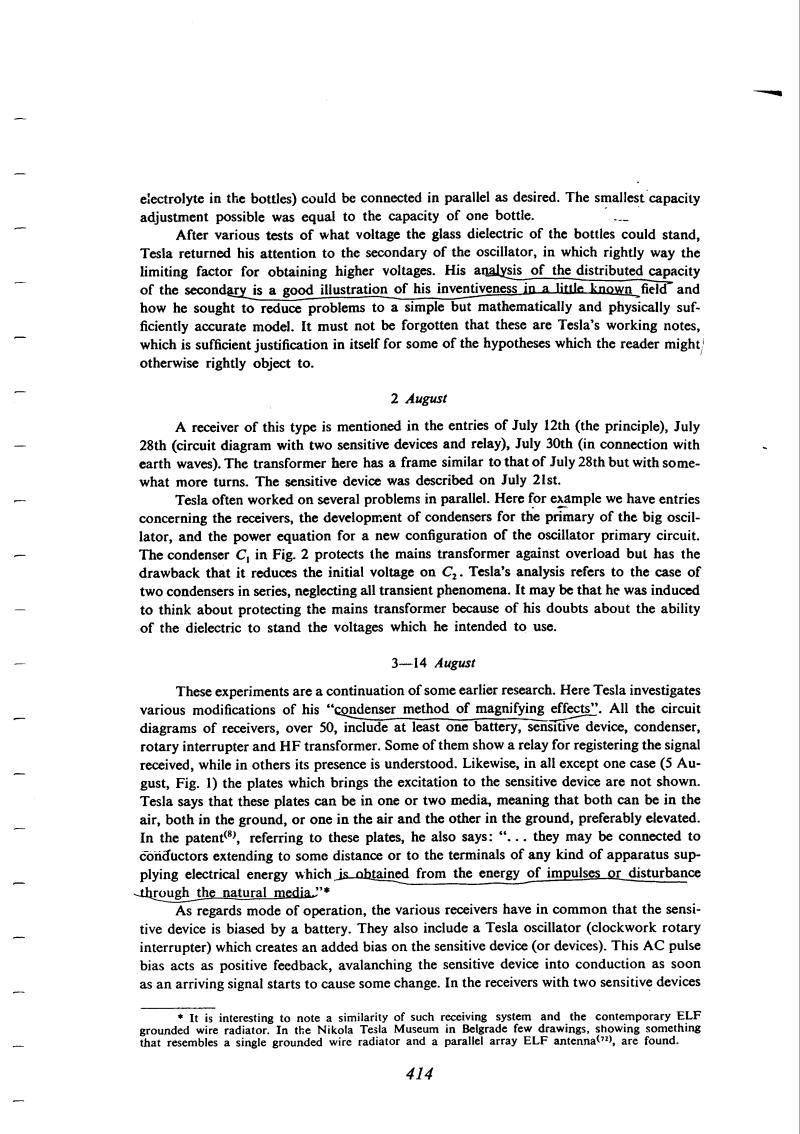August 3-14
These experiments are a continuation of some earlier research. Here Tesla investigates various modifications of his âcondenser method of magnifying effectsâ. All the circuit diagrams of receivers, over 50, include at least one battery, sensitive device, condenser, rotary interrupter and HF transformer. Some of them show a relay for registering the signal received, while in others its presence is understood. Likewise, in all except one case (5 August, Fig. 1) the plates which brings the excitation to the sensitive device are not shown. Tesla says that these plates can be in one or two media, meaning that both can be in the air, both in the ground, or one in the air and the other in the ground, preferably elevated. In the patent(8), referring to these plates, he also says: â... they may be connected to conductors extending to some distance or to the terminals of any kind of apparatus supplying electrical energy which is obtained from the energy of impulses or disturbance through the natural media.â*
As regards mode of operation, the various receivers have in common that the sensitive device is biased by a battery. They also include a Tesla oscillator (clockwork rotary interrupter) which creates an added bias on the sensitive device (or devices). This AC pulse bias acts as positive feedback, avalanching the sensitive device into conduction as soon as an arriving signal starts to cause some change. In the receivers with two sensitive devices


